Report: 10 of the Worst-sited Wind Energy Projects for Birds
Hundreds of thousands of protected birds, including some endangered species, die each year when they collide with wind turbines and associated power lines. The number of turbines is set to grow significantly as wind energy projects continue to expand across the landscape, likely causing a major increase in this already serious problem.
American Bird Conservancy has identified 10 of the worst-sited wind energy projects in the United States. The projects listed below are merely illustrative of a much broader problem, and were selected to show a range of wind development-related threats to birds in various regions and habitats, said Mike Parr, ABC's Vice President and Chief Conservation Officer. (See press release or view list as a PDF.)

Birds fly through a gauntlet of wind turbines. Poor siting of turbines is causing increasing, and unnecessary, mortality of birds and other wildlife. Photo J. Marjis/Shutterstock
“ABC supports Bird-Smart wind, and it is not our intention to criticize the concept of renewable wind development in general or the developers of the specific projects included in the list,” Parr said. “Rather, this list is intended to demonstrate that, under the present voluntary guidelines, there is an inadequate system of checks and balances to protect American native birds from poorly planned wind development on a large scale.”
The listed projects—five already built or approved and five proposed—are located throughout the United States, in California, Hawaii, Kansas, Massachusetts, Missouri, New York, North Dakota, Texas, West Virginia, and Wyoming. Some of these projects have a long history of causing bird deaths. All illustrate the risks of poor siting and the limitations of current mitigation strategies.
“Alternative energy is not ‘green' if it is killing hundreds or thousands or millions of birds annually,” said Dr. Michael Hutchins, Director of ABC's Bird-Smart Wind Energy Campaign. “Our wildlife should not be collateral damage in our effort to combat climate change, nor does it have to be. Improved regulation and science leading to proper siting, effective mitigation, and compensation would go a long way to address this conflict.”
(Note: Projects are listed in alphabetical order.)
EXISTING AND APPROVED PROJECTS
CHOKECHERRY AND SIERRA MADRE
Location: Carbon County, Wyoming (Power Company of Wyoming LLC)
Why listed: Located in key breeding and foraging habitat for Greater Sage-Grouse and Golden Eagle

Greater Sage-Grouse by Tom Reichner, Shutterstock
This is a huge, up to 1,000-turbine development, that could eventually become the largest wind energy facility in the U.S. The project has been approved, and the first phase may begin soon. The site sits in sensitive Greater Sage-Grouse breeding habitat as well as vital Golden Eagle habitat. Sage-grouse are known to be displaced by turbines and associated power lines and towers. Bureau of Land Management biologists have estimated that 46 to 64 Golden Eagles could be killed here annually. The developer has disputed those findings and will apply for an Incidental Take Permit from the U.S. Fish and Wildlife Service (FWS).
To date only one such permit has been granted (to Shiloh IV in California), although hundreds of eagles have been killed by wind energy facilities across the country. Two prosecutions have taken place so far for eagle and other bird deaths (Pacificorp and Duke Energy); without a permit, any take of a Bald Eagle or Golden Eagle is illegal under federal law.
GULF WIND
Location: Kenedy County, Texas (Babcock & Brown, now owned by Pattern Energy)
Why listed: Located in a critical migratory pathway for songbirds; many raptor species are present; impacts habitat for declining grassland birds

Long-billed Curlew by Greg Lavaty
This wind energy project, on the Kenedy Ranch in southern Texas, is located inside the Gulf Coast and Lower Rio Grande bird migration corridors. Many sensitive grassland species, such as Sprague's Pipit, Savannah Sparrow, Horned Lark, Grasshopper Sparrow, and Long-billed Curlew, also use the area and could be harmed through collisions or displacement. The area is also used by several resident raptor species, including White-tailed Hawk, Crested Caracara, and Harris's Hawk.
The region was recognized in the top 500 Important Bird Areas in the United States by ABC in 2003. To the developer's credit, radar units have been deployed to detect and shut down the turbines when large numbers of birds are present, but insufficient information is yet available to prove their effectiveness in preventing bird deaths at this location.
KAHEAWA
Location: Lahaina District, Maui, Hawaii (First Wind, now part of SunEdison)
Why listed: One of the top known killers of endangered birds

Nene by Jack Jeffrey
To the state of Hawaii's credit, the project developers were required to complete an Environmental Impact Statement. Furthermore, following consultation under the Endangered Species Act (ESA), a Habitat Conservation Plan (HCP) that includes compensatory mitigation was also completed and is in force. In spite of that, as of February 2015, Kaheawa Phase I had killed at least 22 Nene (Hawaiian Goose) and seven Hawaiian Petrels, both endangered species that have already been decimated by introduced predators, such as rats and feral cats, and habitat loss. The incidental take permit issued by FWS allows the developer to take up to 38 petrels and 60 Nene over the life of the permit, which ABC considers excessive.
This project illustrates the shortcomings of pre-construction risk assessments, HCPs, and incidental take permitting as currently practiced. Wind project impact is often assessed project-by-project instead of considering the cumulative impact of several projects, and other factors affecting bird mortality are seldom incorporated.
No wind project in the country is known to have killed more endangered birds than the Kaheawa facilities. However, Hawaii is the only state in which post-construction mortality data are collected by third- party, independent experts and made available to the public on request, so Kaheawa is also one of the only projects in the country where endangered species take can be reliably assessed.
LAUREL MOUNTAIN
Location: Laurel Mountain, West Virginia (AES Energy Storage)
Why listed: Site of one of the largest single songbird mortality events ever recorded in North America
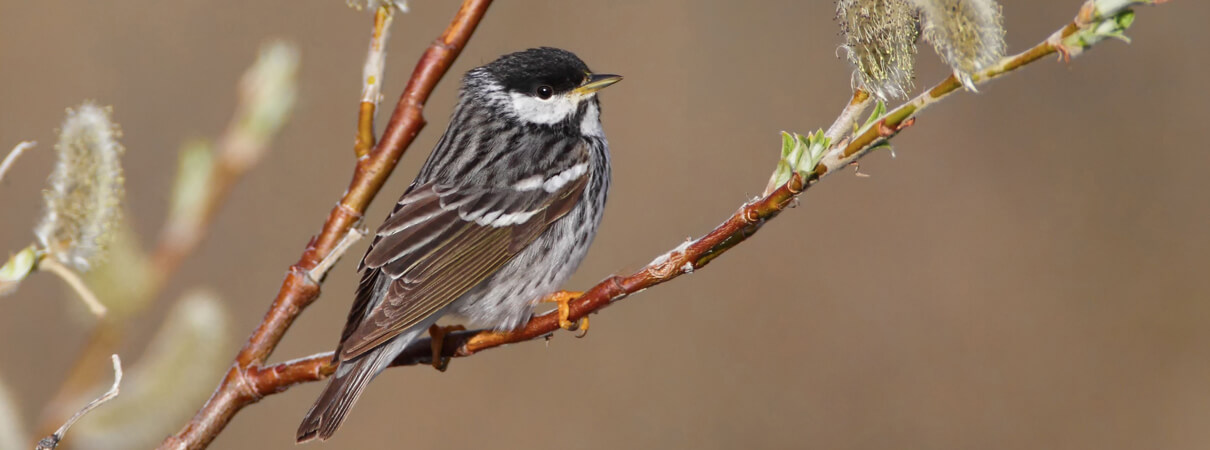
Blackpoll Warbler by Dan Behm
This project illustrates risks that occur not just from turbines but also from other associated infrastructure, including power lines, communication towers, and battery storage facilities. Neotropical migratory birds, some of conservation concern, move through or nest in this area every spring and/or fall. These include Wood Thrush; Scarlet Tanager; and Black-throated Blue, Golden-winged, Worm-eating, and Connecticut Warblers.
In 2011, nearly 500 birds representing at least 30 species—including many Blackpoll Warblers and a number of Connecticut Warblers—were killed within a few hours when colliding at night under foggy conditions with lighted energy-storage units and communication towers near the turbines. To its credit, the company reported the incident, pled guilty to violations of the Migratory Bird Treaty Act, and was subsequently fined $30,000 for the violations.
SUMMIT REPOWERING (AT ALTAMONT PASS)
Location: Alameda County, California (Altamont Winds, Inc.)
Why listed: Poses an ongoing threat to Golden Eagles and other birds as a result of poor siting
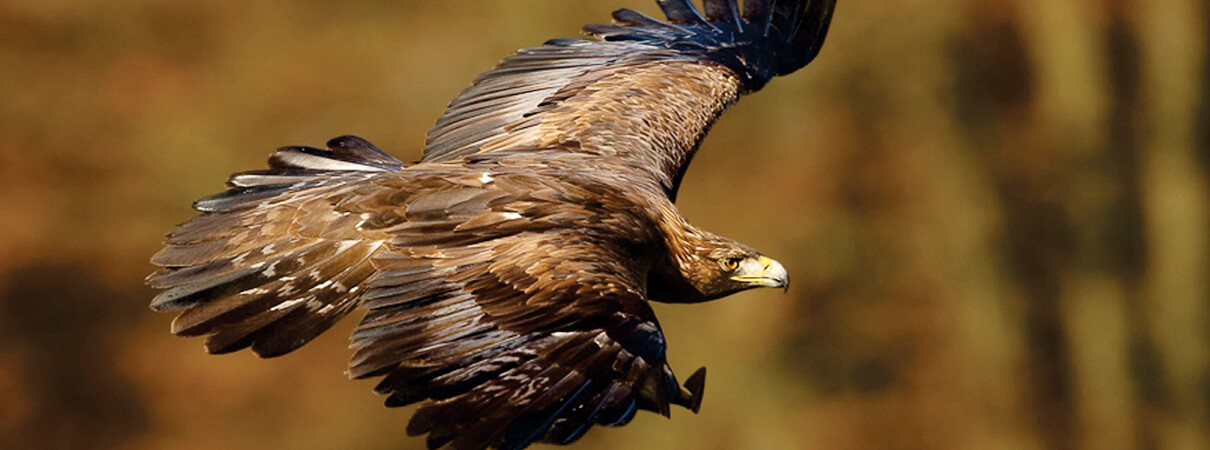
Golden Eagle by Martin Mecnarowski, wikimedia
The nearly 5,000 turbines operated by four different developers in the Altamont Wind Resource Area in California are known to be among the top killers of birds in North America, with more than 2,000 Golden Eagles being lost since 1998 when the facilities started keeping track. Thousands of other birds of more than 70 species have been killed by wind turbines in the region as well.
Of all of these, the poorly sited Summit Repowering Project (formerly the Altamont Winds Wind Energy Project) has long been one of the worst killers of eagles and other raptors. Now, the developer has applied for a permit to replace a portion of its array of older, lattice-style turbines with 33 much taller, modern monopole turbines. Summit Repowering has still not properly compensated for its huge volume of unlawful bird kills but now seeks permission from Alameda County to repower, without proper public review of its siting plan.
Unfortunately, given the facility's legacy of bird mortality, it is inconceivable that it will be able to avoid killing eagles and other raptors on terrain inhabited by one of the hemisphere's densest concentrations of Golden Eagles.
PROPOSED PROJECTS
CAPE WIND
Location: Nantucket Sound, Massachusetts (Cape Wind Associates)
Why listed: Proposed location in area with one of the largest concentrations of migratory birds in the world; high risk of catastrophic mortality events
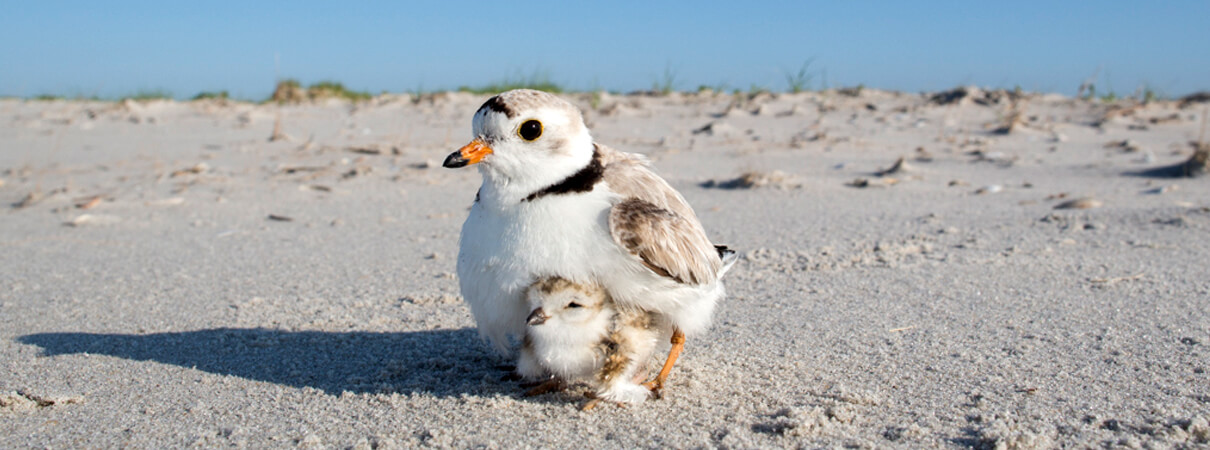
Piping Plover @ Michael Stubblefield
Spread over a 24-square-mile area on Horseshoe Shoal in Nantucket Sound, this proposed project would be located offshore in an area that hosts one of the largest concentrations of migratory birds in the world. As many as 6 million birds move through this area in spring and fall, creating the potential for catastrophic mortality events, especially during bad weather. Endangered Piping Plovers and Roseate Terns use the area and could be threatened by the project. As many as a half-million sea ducks, including large numbers of Long-tailed Ducks and Common Eiders, also winter in the Nantucket Sound and could be displaced or killed in collisions.
Portions of Nantucket Sound—including Bird Island, where Roseate Terns breed—have been recognized as an Important Bird Area by ABC. The project was approved, is currently on hold following a series of legal challenges, but is still expected to seek approval for construction. FWS biologists had a negative view of the project's original Environmental Impact Statement, suggesting that the poor quality of the report made it impossible to accurately assess the potential impact on birds.
LIGHTHOUSE
Location: Niagara County, New York near the town of Somerset (Apex Clean Energy)
Why listed: Vast numbers of migratory songbirds and numbers of raptors rely on this area; close to breeding habitat for declining grassland birds
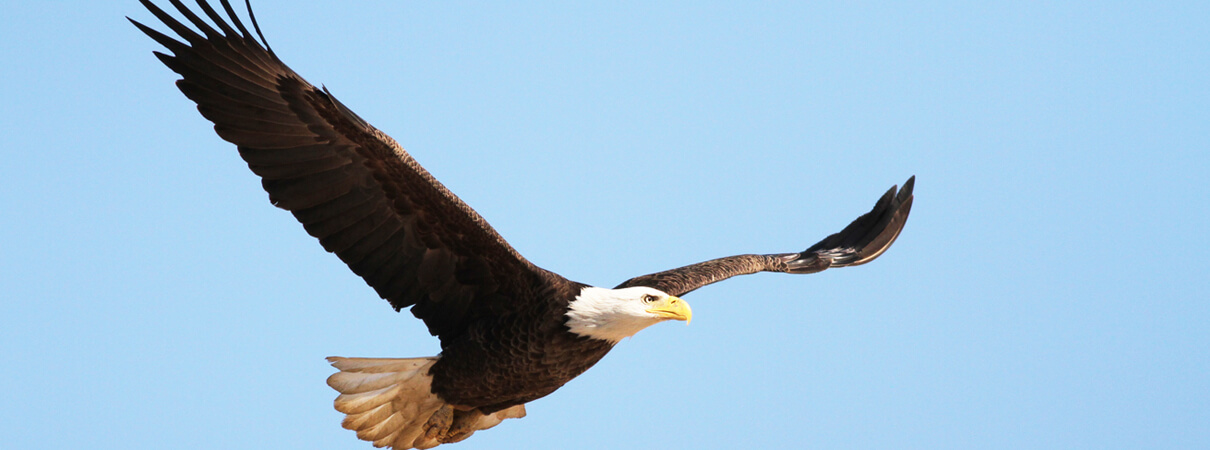
Bald Eagle by Mike Parr
This proposed location on the southern shore of Lake Ontario boasts one of the greatest bird migrations in North America. Up to 71 turbines are planned for an area along the south shore of Lake Ontario. These 570-foot-tall turbines will extend 4.5 miles inland from the lake along a 12-mile stretch. Vast numbers of songbirds and raptors concentrate within six miles of the shoreline during spring and fall of each year. This area also has pockets of key habitat for sensitive grassland birds, which could be displaced by the wind turbines. Federally protected Bald Eagles from a nearby wildlife refuge are also at risk.
FWS has expressed serious concern about this project, warning the developer that this is an area of extremely high avian use. However, the developer appears to be going ahead with its plans, conducting its own studies, disputing previous work done by other researchers, and ignoring the concerns of local residents.
MERRICOURT
Location: McIntosh and Dickey Counties, North Dakota (EDF Renewable Energy)
Why listed: Threat to the endangered Whooping Crane and other federally protected birds
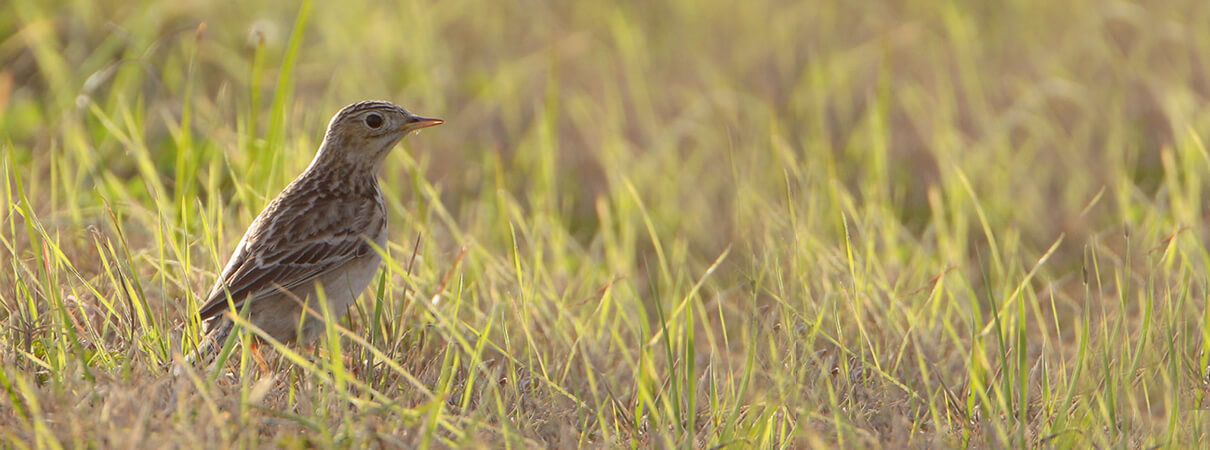
Sprague's Pipit by Greg Lavaty
This highly controversial project, which could involve the first incidental take permit for the endangered Whooping Crane and which has already drawn the concern of conservation organizations, lies within the Whooping Crane migratory corridor and could also impact other federally protected birds including Piping Plovers, Sprague's Pipits, and Bald and Golden Eagles. The project would also be located in a key migratory corridor for vast numbers of waterbirds in North Dakota's sensitive Prairie Potholes region.
ABC and the International Crane Foundation expressed serious concerns to FWS about the revival of this project in November 2014, citing it as “another potential example of the failure of the current voluntary guidelines to protect our native bird species.”
NINNESCAH
Location: Pratt County, Kansas (NextEra Energy Resources, LLC)
Why listed: Poses a high risk to Endangered Whooping Cranes through infrastructure development
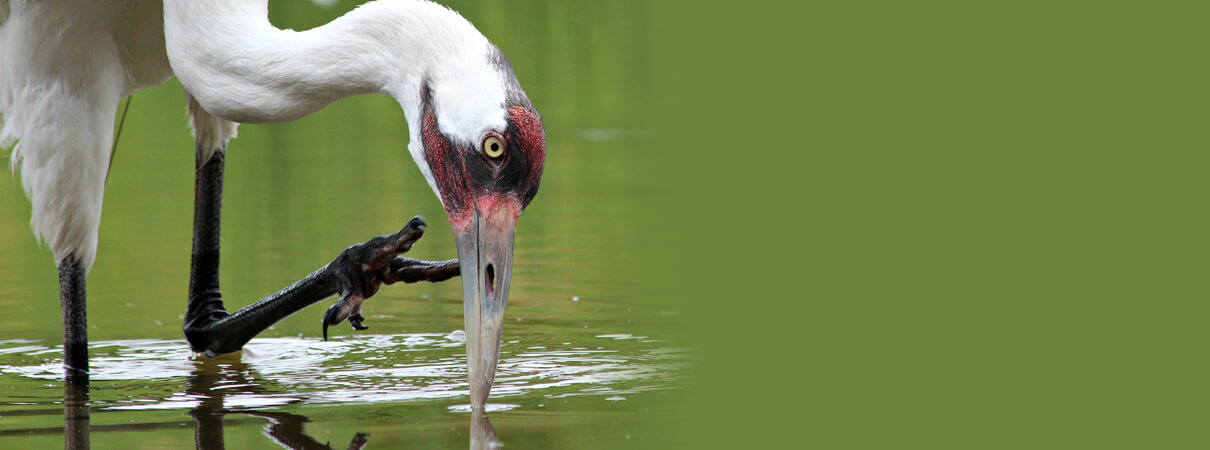
Whooping Crane by Laura Rowan
Building this facility will require the construction of a 66-mile-long powerline and numerous 135-foot-tall supporting towers that would traverse the Whooping Crane migratory corridor and connect this to other wind energy projects, Flat Ridge I and II (existing) and III (proposed). The Quivira Wildlife Refuge, listed as critical habitat for migrating Whooping Cranes, is about 30 miles due north of the site, with several other wildlife refuges nearby. While the turbines themselves could pose a risk, collisions with power lines and towers are a leading cause of mortality for adult Whooping Cranes.
ABC and the International Crane Foundation have written to FWS expressing serious concern about the potential cumulative impact of the many wind facilities and power lines in the area on this endangered species.
ROCK CREEK
Location: Atchison County, Missouri (TradeWind Energy)
Why listed: Poses a high risk to migratory birds and Bald Eagles moving in and out of the Squaw Creek Wildlife Refuge

Tundra Swans by Delmas Lehman, Shutterstock
This already-controversial project would place turbines in the migratory corridor used by vast numbers of birds on their way to and from Iowa to the Squaw Creek Wildlife Refuge in northwest Missouri. Migratory waterfowl, including Trumpeter and Tundra Swans, over a million Snow Geese, and a wide variety of duck species also visit this area, which has been designated an Important Bird Area by ABC. Bald Eagles migrate into the Squaw Creek refuge and surrounding areas. By late fall and early winter, as many as 300 immature and adult Bald Eagles and an occasional Golden Eagle can be seen at the migration's peak. A 2001 survey recorded a record 476 Bald Eagles in the area.
FWS, Missouri's Department of Natural Resources, and ABC have expressed serious concerns about the siting of this project. A similar project, Mill Creek, was to be located near the refuge, but was canceled and moved due to opposition by ABC and local partners.


















































